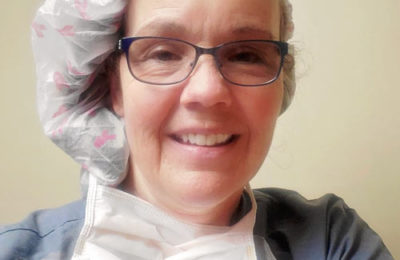Decades Ahead: How did Spokane, Washington become decades ahead in the care and research of the heart, most notable in 1980?
Well, notable in 1980 are two enduring, scientific events that were accepted globally, both from Spokane, Washington. First, the research and publication of the work definitively revealing what happens to cause a heart attack, a total occlusion of one or more coronary arteries. Second, the research and presentation of the work definitively revealing the treatment of a heart attack, acute coronary revascularization/ACR, with the research paper publication following in 1981.
--DeWood MA, Spores J, Notske R, Mouser LT, Lang HT. 1980. "Prevalence of Total Coronary Occlusion during the Early Hours of Transmural Myocardial Infarction." New England Journal of Medicine. Vol. 303. October 18. 897-902.
--Berg, R, Selinger S, Leonard R, Grunwald W, O'Grady. 1981. "Surgical Treatment of Acute Evolving Anterior Myocardial Infarction (AEMI)." Journal of Thoracic and Cardiovascular Surgery 81 (4): 493-497.
He did not want to wait for the first heart attack to complete itself. He chose to approach heart surgeon Dr. Ralph Berg because, well Berg, he was approachable. Their meeting went well and heart surgeon Berg agreed with Everhart. Preserving the myocardium was critical for the blue babies as well. Berg started his surgical career in 1945 and remained connected and treated blue babies for his entire career. Together, they developed the protocol. The first tier, cardiology would image the coronary arteries during symptoms, not waiting. The second tier, heart surgeons would acutely revascularize the affected coronary artery, as shown on the cardiologist’s imaging. The intent to publish their results in a scientific manner was established. 
These two scientific events that advanced cardiac care worldwide are intimately linked by a unique two-tiered research protocol and subsequent database that was initiated by cardiologist Dr. Francis Everhart in June of 1970. His idea to image with a coronary angiogram the heart and its three coronary arteries during the time a patient was having chest pain, in the ER with EKG changes was not considered safe. This nihilistic approach was founded on the lack of any chance of helping heart patients over the millennia. However, starting slowly in the 1920’s and gaining momentum with shunt procedures in 1944 the surgical procedures to help the doomed blue babies with their heart defects was underway.
Dr. Everhart came to Spokane in 1968 because of the acclaimed heart teams associated with pioneering open-heart surgeon Dr. Ralph Berg. Well-trained and independent in his cardiology care, Dr. Everhart began performing coronary angiograms on patients with chronic angina and on patients having chest pain in the ER. A new cardiac surgery procedure rolled out developed by Dr. Rene Favaloro at the Cleaveland Clinic in March of 1969. This procedure, a coronary artery bypass graft was done using a heart-lung machine, and was difficult for the heart surgeons to perform. Well, Dr. Everhart’s idea was to prevent a chronic angina patient from developing by not waiting.
Two other cardiologists Dr. Carroll Simpson, who moved to Spokane in 1970, and Dr. Henry Lang, who came to Spokane to work with Dr. Berg in 1954 were close behind Dr. Everhart and started performing coronary artery angiography in 1970 emergently for this group of patients, they called emerging myocardial infarctions. They called this a Fast Cath. The first successful case with the protocol was in early 1971 and is a legendary case in Spokane’s medical history. Dr. Berg held weekly chest conference which was at both downtown Spokane hospitals. At conference all aspects of this case, as well as cases not accepted by the surgeons, were discussed. Pathology came to the conferences as added invaluable information from the specimens and the post mortem exams.
Cardiologists, initially not willing to perform an emergency coronary angiogram on patients having a heart attack, changed their opinion due to the magnitude of the success with more and more patient’s superior outcome. The patients not only survived, they did not have myocardial damage, they did not have a second heart attack, often lethal, they walked out of the hospital and returned to their families and work.

The chronic angina patients and the research studies on this large group of patients showed they did not survive longer than the randomly selected chronic angina
patients who were treated with advanced cardiology care only, without
the stable coronary artery bypass.
This acted like a veil. The acute coronary artery revascularization was gaining momentum, due to the patient survival. While the initial scientific papers from 1974 to 1976 were rejected, the rejection was mostly as a wild idea, a radical idea, an idea not comprehensible to the audience, still thinking about chronic angina patients. On the surgery side, should the Vineberg procedure be replaced by the coronary artery bypass, a more difficult operation for the chronic angina patient? On the cardiology side, should the coronary angiogram be used if the patient was in the danger zone of having a heart attack? In Spokane the success with ACR/acute coronary artery revascularization was infectious. Language developed to communicate the nuances of an emerging heart attack.
By 1977, the world had debated these issues for chronic angina patients for over ten years. The Vineberg procedure was advanced in 1964, the coronary bypass in 1969. By 1977, the world knew what was happening in Spokane, Washington with acute coronary revascularization and were waiting for the research papers, see above.
The foundational pieces of well-trained, experienced cardiologists and heart surgeons in addition to their team work, cardiologist and diagnostic testing followed by immediate referral to available, open-heart surgeon, who could review, discuss, examine the patient, and make an informed decision for treatment. This is how Spokane Washington become decades ahead in the care of hearts.
“Blue Baby and Acute Coronary Revascularization,“ is publishing this year, 2024 in December. Written by Dr. Tracy Berg the niece of Dr. Ralph Berg. She interviewed 44 people for this book.
Please visit her Facebook page, website, publisher website Koehler Books.






